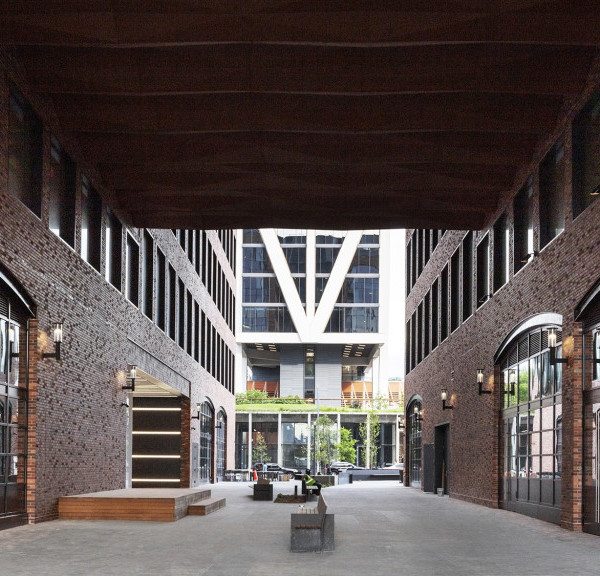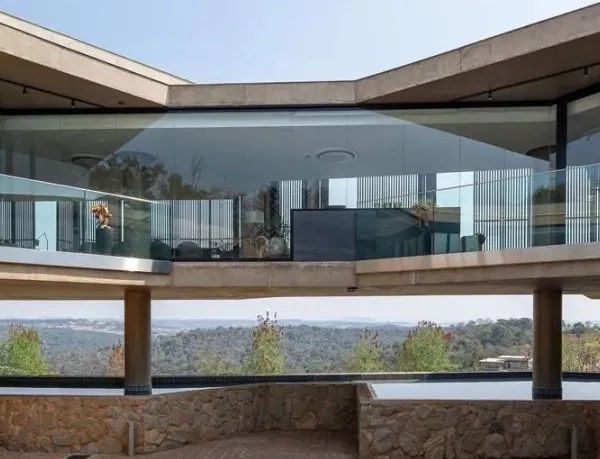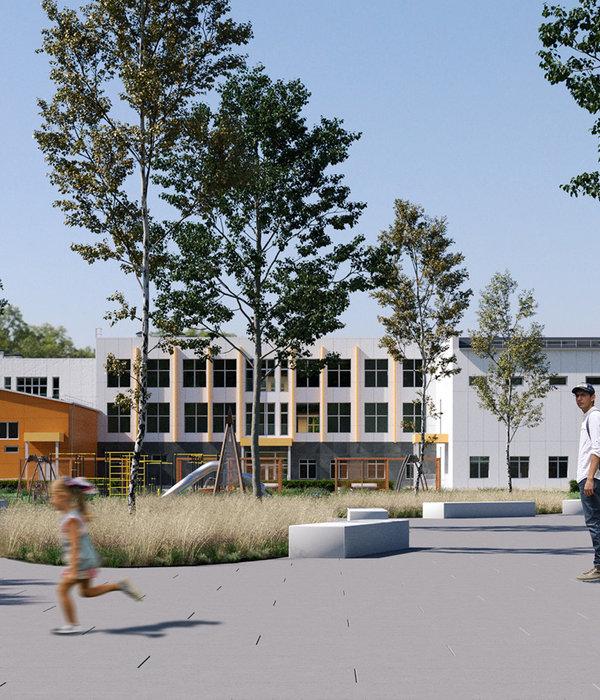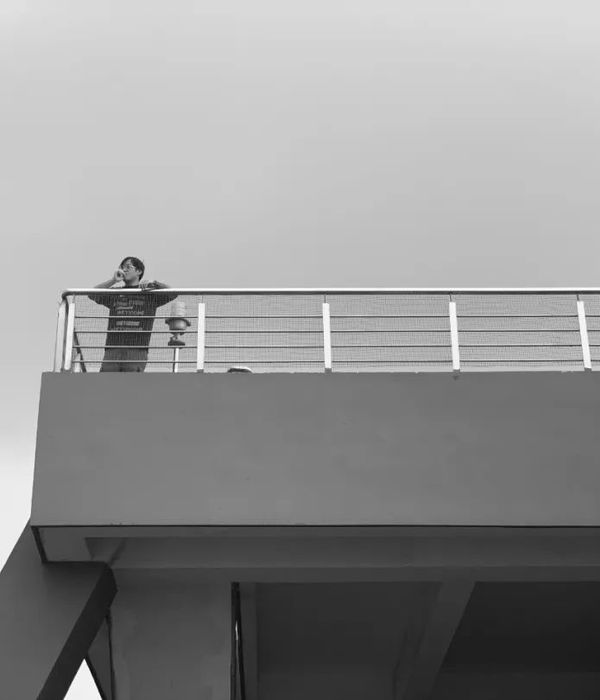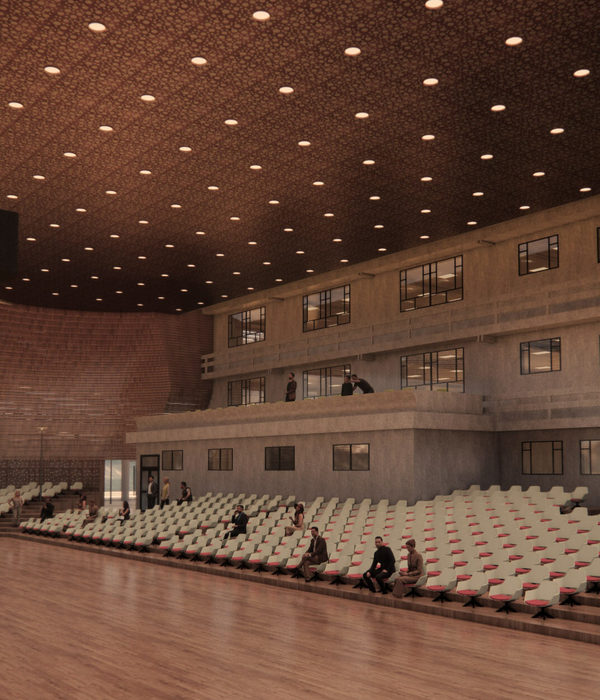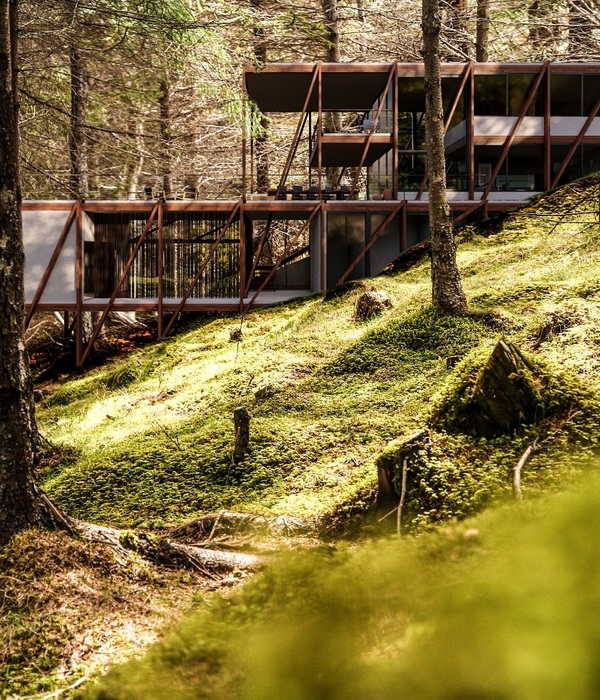2k architecte presents Oiseau Lyre, a school with Nordic inspiration in
, France. Anchored on a plot with 8 meters of elevation, the school faces North towards the Marne and explores a new pedagogical model of Finnish inspiration, offering a diversity of shared spaces. The compact building of 50mx100m is set on 4 levels, maintaining a low height profile in relation to neighboring pavilions. Like a Palladian villa, functions are embedded in the core of the building, in an area filled with natural light and the social vibrancy of the school.
Oiseau Lyre,
brings the environmental and educational ambitions of the City of Noisy le Grand to realization through the construction and interior design of a positive energy building made of wood. Based on recent cognitive research, it provides a framework for active pedagogies.
In its spatial proposals, the school's design incorporates the latest know-how of Nordic schools, and those of the Quebec Lab school, models which r2k architects Véronique Klimine (France) and Olavi Koponen (Finland) visited.
Delivered in September 2022 to welcome its first students, the school will ramp up operations in 2023/ 2024 with the arrival of new inhabitants of the neighboring eco-district.
The program includes 24 classrooms for kindergarten and elementary students, as well as 8 rooms intended as recreation spaces. Common spaces, including a multipurpose room with direct external access, a motor room, an art gallery, a library, a restaurant, and a sports hall are shared with civic associations when school is out.
On a steep slope facing the Marne River, three levels of the 4-level school are connected to the natural terrain, facilitating the safety of children. Located in the middle of a vernacular district, the project also respects the proportions of surrounding houses.
The project welcomes natural light into the heart of school spaces, despite its diminutive size of just 50mx100m. It is sculpted with light thanks to sheds, skylights, interior glazing, and more that highlight wood materials in the heart of the building through the atrium and the steps. Light and materiality are essential parts of well-being and, from the interior spaces, the view of the private gardens greatly contributes to a peaceful atmosphere. Acoustics defined by wooden ceilings, as well as indirect lighting, complete the soothing environment. The school's 'living wood' consists of visible constructive elements and refined coatings, with pleated cladding cut to measure.
A renewable resource and carbon sink, wood provides both aesthetic and functional solutions while promoting the integration of a new urban element into the vernacular environment. Each zone has its structural typology, with truss lattices forming sheds, trees columns/ plank round wood, ribbed CLT floors, LVL accessible roof floor coffers, wood frame walls, CLT splits, and wooden beam posts as a primary skeleton.
Crossing through the elementary courtyard to the gym, trusses of 22m are arranged in a shed to form a courtyard that introduces a soft light and supports the solar panels. A ribbed LVL floor supporting the courtyard crosses 22m on 4 supports above the gym, and are the largest caissons of this type ever made. The playgrounds's rooftops were points of constructive innovation.
Multiple factors must be addressed to achieve the result of a building producing more energy than it consumes. The first involves limiting thermal losses. The second requires capturing renewable energies in passive and active ways, which is achieved by integrating photovoltaic panels located on the south side of the sheds. Electrical, kitchen, and double-flow ventilation equipment were chosen for their sobriety, making natural ventilation of the classrooms possible. Protective equipment against direct external sunlight is also installed, while internal floor-heating is achieved thanks to a dozen geothermal probes.
{{item.text_origin}}

